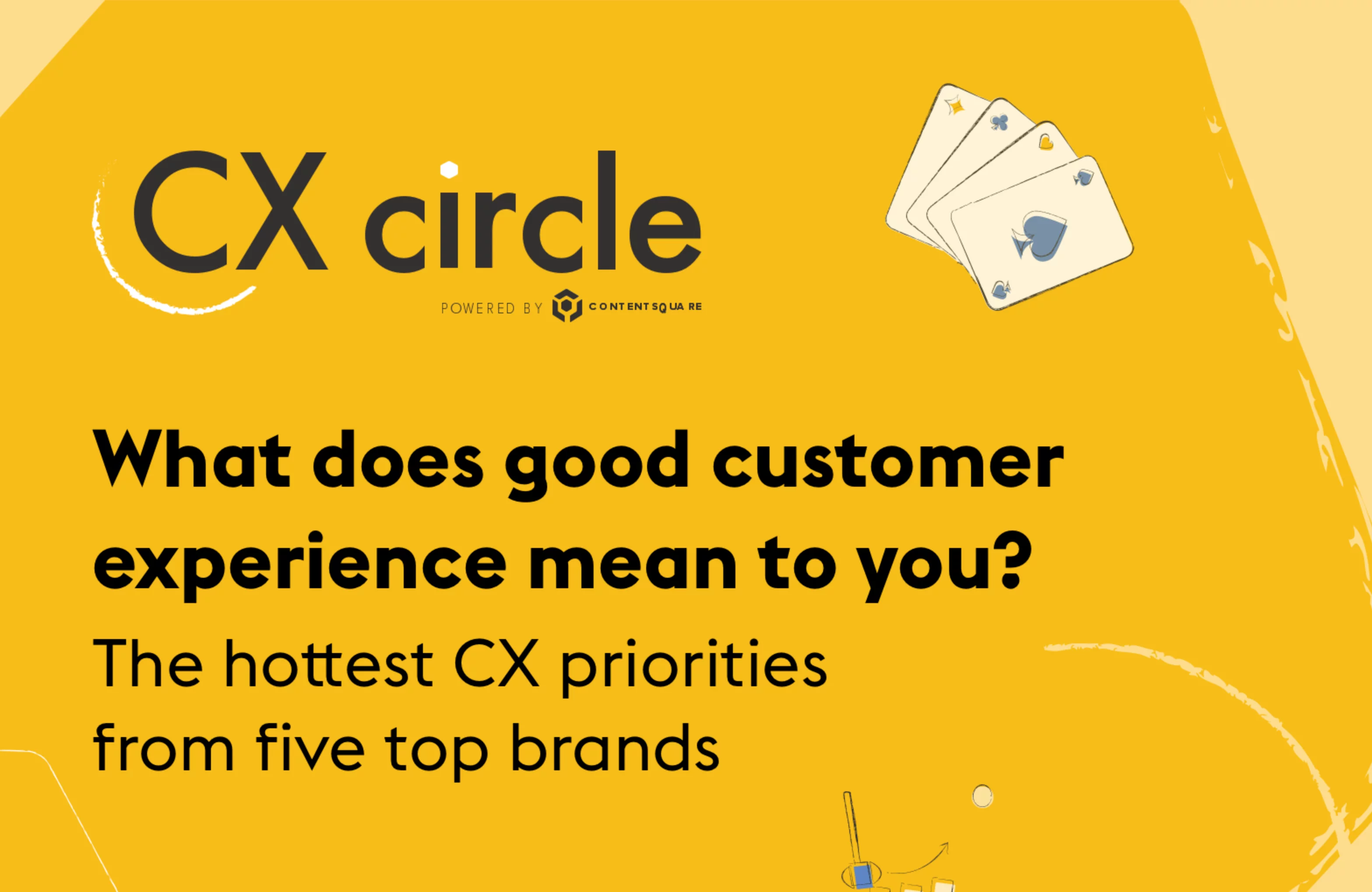What does good customer experience mean to you? The hottest CX priorities from five top brands

Customer experience, also known as CX, is the overall perception that a customer has of your brand. Whether buying your product, talking to customer service, or following you on Twitter; every single thing you do has the power to influence how your customers perceive your business. So you need to give them something that keeps them coming back for more.
And in today’s world, there are plenty of touchpoints for you to talk to your customers. From social media to search engine optimisation, online events to Google advertising; the world is your digital CX oyster.
But with all of these channels open to you, what actually makes a good customer experience? And how can you use these channels to build a brand that your customers will love? Let’s take a look.
What is a great customer experience?
This depends heavily on your business and your customer, so the ideal customer experience will look slightly different for everyone. If you’re an online fashion retailer, for example, your business goals will be different from a charity website, or a bank. But, luckily, there is common ground.
We spoke with members of our Contentsquare community to understand what a good customer experience means to them. Unsurprisingly, the same things came up time and time again. Why? Because there are some aspects of customer experience that are entirely universal – the absolute CX necessities if you will.
Here are the top three…
1. Ease and simplicity
Steven Biggs, Digital Analytics Lead for Samsung, explains the concept of the customer experience in one word: “seamless”. It’s all about creating experiences that need as little thought as possible. “On every page, the customer shouldn’t even have to think or look around the screen,” he explains, “When they move the mouse to the top-right corner to search; that’s where the search box is already open. When they move the mouse to the top-left corner to return to the homepage; that’s where the company logo is. The less the customer has to think, the better the CX.”
The less the customer has to think, the better the CX.
And H&M’s Data Analyst Kelly Chies agrees; “Every additional click needed for our customers to find what they are looking for increases the risk of losing them. Customers shouldn’t have to dig through our site to find what they are looking for.”
So first up; create a site that’s as simple as possible to use. That means understanding exactly how your customers use your site; how they enter, what they click on, what pages they use most, what content makes them bounce, what they interact with or skip over. And the difference between a good customer experience and a great one is being absolutely ruthless with how you analyse and act upon those insights.
If 90% of your customers click on a CTA below the fold, move it higher up – don’t make them scroll to find it. If your navigation is messy and customers don’t use it, swap it up and use CX insights to uncover what needs to be there, and what can be removed. It’s all about simplicity.
Our customer journey analysis helps you see how visitors progress through your site, showing you your biggest opportunities and customer’s frustrations within minutes. This helps you create digital journeys with as few touchpoints as possible, which improves your customer’s perception of your brand.
2. A customer-centric mindset
We’re going to be blunt here (it’s for your own good, promise): It doesn’t matter if you think you’ve written the best blog post ever if your customers spend less than 10 seconds on the page. It doesn’t matter if you’re proud of your homepage video if your customers bounce immediately. And it really doesn’t matter if you love the copy on your product page if no one’s buying your damn product.
Know what your customers want, not what you want as a business.
“Know what your customers want, not what you want as a business,” says Tianyi She, Digital Experience Manager at NatWest Group. “Too often [companies] build a new tool or new functionality that looks cool but the usability is really poor” or even worse; customers simply don’t engage with it at all. This means it’s a waste of time for you and it’s causing friction for your users, and a bad customer experience.
So this one’s simple; if it’s not working for your customer then you gotta kill that content. Even if you love it. Even if you spent hours on it. Because you’re not working for 45 hours a week to sell your product to yourself. So make sure you put your customers first – at all times.
Customer journey mapping and zone-based heatmaps will give you the confidence you need to kill that 10-minute CEO interview lingering on your homepage. A great customer experience is not about you, it’s about your customer. Always. This is non-negotiable.
3. Brand consistency
No matter how big or small your business, ensuring you communicate a clear and consistent message across all your channels is critical to success. “A good customer experience should be omnichannel,” says Johanna. “As a customer, I would expect the same tone of voice, interactivity, and service on all channels.”
As a customer, I would expect the same tone of voice, interactivity, and service on all channels.
Strong and consistent branding helps to reinforce your brand identity and build a stronger relationship with your customers. Over time, your core messaging, tone of voice, and visual branding will become ingrained into the minds of your customers, helping to drive positive sentiment and trust. But even more importantly, it helps to ensure your brand is recognisable and easy to remember – an absolute must in today’s heavily saturated market.
“It’s human nature to want to feel connected to everything around us, including the brands we interact with every day,” explains Tim Sisson, Consumer Experience Analyst at Trader Interactive. So the stronger connection you can build with your customers – through consistent branding and a clear message – the easier it is to convert them. It’s all of those little branded interactions, pieced together, that create “the experience that wins the customer over and has lifetime value”, says Tim.
It’s a no-brainer: A consistent story helps to build a better connection with your customers, so make sure all your channels are singing from the same hymn sheet.
The Contentsquare difference
And if you need a little help ensuring your customer experience is as good as it can be, Contentsquare is here to make that happen. From optimising content to enhancing experimentation performance, we’ll help you make better, smarter, faster decisions. How? By going beyond traditional clickstream analytics to give you all the metrics you need to truly understand your customer behaviour.
Join us at our upcoming virtual CX Circle event to learn more about building customer experiences that actually convert.
Keep Reading...




